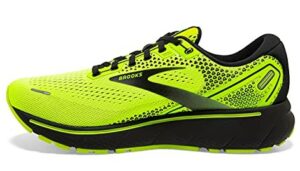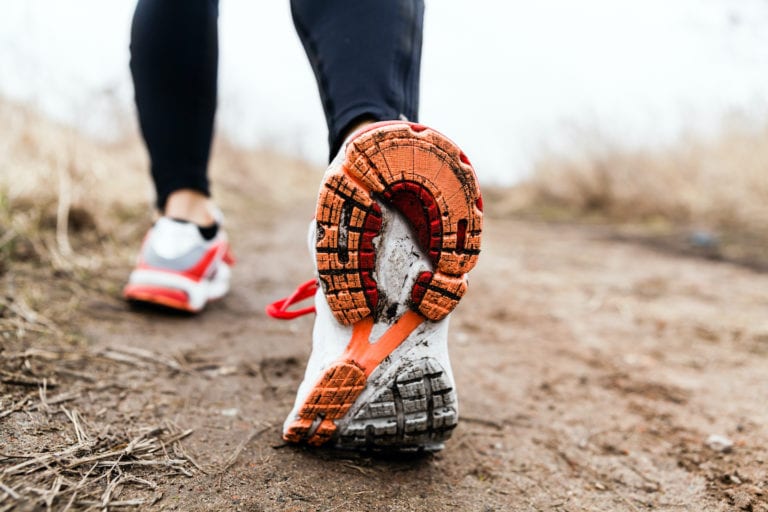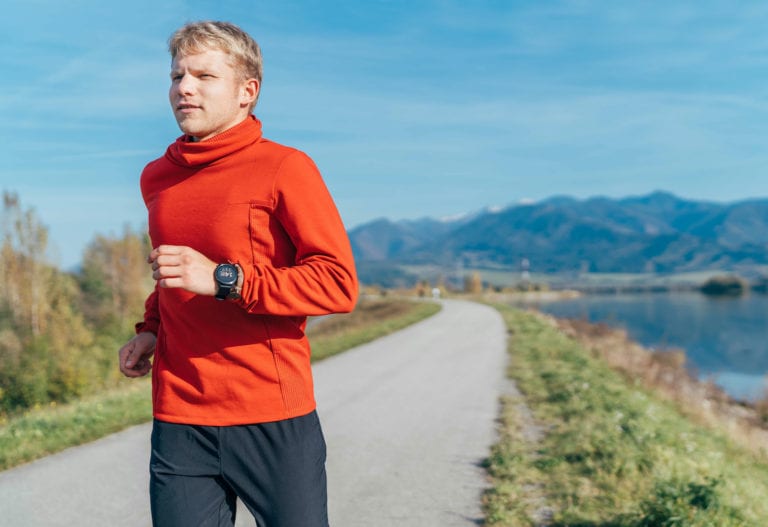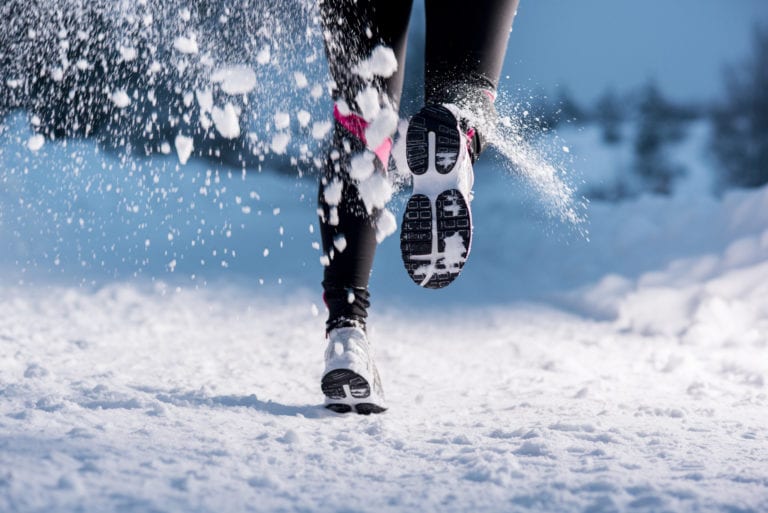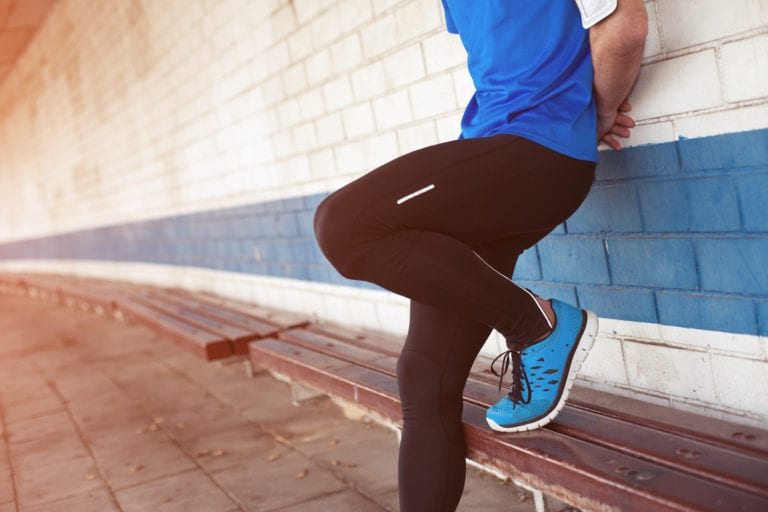If you live in a flat area and have signed up for a mountain race or a trail running event that includes a lot of elevation gain, you might be seriously concerned about how you’re going to get that vertical into your training plan.
Regardless of your level of fitness, overall preparation and commitment, there’s simply nothing that can truly replicate the strategy and effort level required to make it in the mountains.
Can you train for the mountains on a treadmill? The good news is: yes, you can! By using your treadmill as an uphill training tool and incorporating some treadmill workouts to mimic those alpine hiking trails, you can prepare mentally and physically for mountain races in a flat region.
In this article, we’ll cover:
- The benefits of running on a treadmill for trail runners;
- How to simulate mountain running on the treadmill;
- Some treadmill workouts to get you started.
Advantages of Using a Treadmill for Mountain Runners
When you run outdoors as a matter of routine, you get used to all sorts of factors that impact your level of performance. Weather, other runners or simply people you need to go past, cars and traffic lights in a city, and of course trail conditions and obstacles all play a part in influencing how many miles per hour you can actually cover. However, all that goes out of the equation when you do a treadmill run.

General Benefits of Treadmill Running
Treadmills can be used as great running training tools, thanks to these multiple benefits:
- Every aspect of the run is controllable. From the speed to the level of incline, to the ambient temperature, you have a say. Even more so if you run at home, where you can also dress however you like, and test lots of different running shoes if you need to.
- The running surface is predictable. If you’re coming back from injury or need to just run some easy miles while you switch off mentally, jumping on the treadmill is easier than running outdoors, where you cannot just disconnect. This is also a great advantage for uphill running training, because you take out the technical difficulties of the mountain trails and just focus on accumulating elevation.
- You have a lot of data easily available. If you routinely wear a heart rate monitor and like to check out metrics while you run, this is easier to do on a treadmill that connects to your running watch and displays it all on the screen. Moreover, since you can control the treadmill incline, you can check out the connection between your beats per minute and the percentage of the slop you’re climbing.
- Calculating differences in energy cost is easier. Again, because you control so many of the factors during an incline workout indoors, you can experiment with nutrition and hydration and see how the calories burned compare in real time. If you’re really into data analysis, the treadmill can provide some really interesting insights.
Race Specific Benefits of Treadmills
We’ve already shown that you can control almost any variable during your run when you jump on the treadmill. This means you can work on your power hiking ability specifically for your goal race, too. Let’s see how this works.
Replicate Race Profile
If your treadmill is sophisticated enough, you can develop a set of key workouts that replicate the exact profile of your race. For example, let’s say you are signed up the mythical Hardrock 100 Endurance Run. You can download the GPX file for the race and analyze it on your computer, determining that there are roughly 9 big climbs to prepare for.

On the treadmill, you can create an incline workout for each climb, either using an average gradient and running that distance and elevation at one constant slope incline. Or, you can actually – technology permitting – replicate the exact slope conditions and have your pre-built workout essentially be a clone of each climb.
This is extremely useful for training your muscles for the climbs, but also provides great mental training getting you used to the time it will take to do the climbs and how difficult they really are.
Recreate Weather Patterns
This one is a bit trickier, but you can use a treadmill to train for a desert race in cold weather and vice versa. If you are running Badwater 135 and you don’t live anywhere near Death Valley, it will be difficult to do long runs in the required heat conditions. However, you can set up space heaters in your garage and run in warm clothing on your treadmill to come a lot closer! British ultra runner Debbie Martin-Consani did just this while training for the mythical desert race in the middle of Scottish winter.
Practice Aid Station Strategy
Another clever way to use treadmills for mountain and ultra races in general is to make use of them for practicing your nutrition, hydration and logistics at aid stations. The longer the race, the more aid stations you’ll have to prepare for, and sometimes runners end up losing lots of time at them.
Additionally, if you’re running 100 miles, you might find yourself in uncharted territory when it comes to how your body will react to the hours of running.
So, use a treadmill for a long run where you stop and eat/drink/change shoes and socks the way you would in the real race. You can just place everything right next to you! Experiment until you find the combinations that will help you ace your race day.
How To Prepare for a Mountain Race on the Treadmill
Now you know the benefits of treadmill running for mountain races, here is a guide on how to actually include the treadmill in your running plan.
Start With a Fitness Level Test
It’s easy to run a 5k test on the treadmill to look at your current aerobic power and to test your maximum speed. If you have a running coach, you can work with them to establish heart rate zones and use these to determine training intensity in your workouts.
Do Climb Simulations
As we’ve mentioned above, doing simulations of your key climbs in the race you’re training for is a great way to build leg strength for the hills and to train your mental resilience. The incline feature of the treadmill is the reason top trail and mountain running coaches like David Roche swear by using a treadmill, especially for runners who don’t live anywhere near the mountains.
Recreate Race Profile
You don’t have to do the whole run in training. In fact, the longer the race you’re training for, the least you’ll come close to the distance in training runs. However, you can always take a 20-mile chunk out of your race profile and build a customized treadmill workout that mirrors it, with the same inclines. The only slight disadvantage is that you can’t quite replicate the descents.
Be sure to also check out Nearby running trails.
Experiment With Kit
At the gym or at home, running on a treadmill lets you test out race day kit like shoes (only when clean and fresh out of the box though!), shorts, heart rate straps, and even hiking poles. Especially in Europe, using hiking poles to help propel you up hills is a technique that’s definitely worth developing.
They are invaluable for long, steep climbs like you will find in the Alps. Here’s a video of pro mountain runner Sage Canaday joking about “sh*t ultrarunners say” – check out how he’s using his poles on the treadmill, with tennis balls on the bottom so they don’t scrape (it’s funny AND useful!).
Top Treadmill Workouts and Tips for Trail Runners
To make the treadmill work for you, make sure you develop good running form – this is pretty much the same as for outdoor running, but these two videos here and here are quite useful for understanding the biomechanics specifics and make sure you’re staying injury free. And, to get more mountain specific, Sage Canaday’s channel is actually full of useful tips on video – like this one.
Three Treadmill Workouts for the Mountains
Other than race specific workouts, here are three treadmill runs you can add into your training plan to build strength for the hills.
1. Uphill Tempo Session
This is all about steady running at an incline that you can sustain for a good amount of time. Start with a 20-minute warm-up at an easy pace, slowly increasing your intensity but staying well below your heart rate max.
Follow up with a 30-minute steady climb, setting the incline to 5% to begin with. If you find that you cannot sustain that incline for the 30 minutes, decrease your speed but continue to power hike so you still get the climbing benefit.
Increase the steepness of your incline throughout your training cycle (6%, 8%, 10%). Remember: the key is to be able to jog / run for the whole 30 minutes.
Cool down with a 20-minute easy jog at 1-2% incline, moving to flat in the last 5 minutes.
2. Uphill Hiking Workout
The purpose of this session is to get you to develop power hiking form and speed. The key here is that you’re not simply walking – you’re moving as fast as you can while staying efficient with your energy expenditure. More on that here.
Start with a 5-minute warm-up at around 3 miles per hour and 1% incline. Then continue as follows:
- 5 minutes increasing incline by 1% progressively (so, 2%, 3% etc. up to 6%). Speed stays at 3 mph;
- 1 minute at 10% – keep speed constant;
- 5 minutes reducing incline by 1% progressively (so, 9%, 8% etc. down to 5% again);
- 90 seconds increasing incline by 1% every 15 seconds – will end up at 11%;
- 30 seconds staying at 11%, keeping speed at 3 mph;
- 90 seconds decreasing incline by 1% every 15 seconds – coming back to 5%;
- 5 minutes at 1% but increase your speed to 4 mph;
- 5 minutes cool down on flat – jog then slow down to a walk.
3. Pyramid Hills
Perform a pyramid speed session, but with a set incline every week. Interval durations go up and down as follows: 1, 2, 3, 4, 5 minutes, then down back to 1 minute. The recovery periods in between are half the duration you just completed: 30 seconds, 1 minute, 90 seconds, 2 minutes, 2.5 minutes, then again down to 30 seconds.
Start with a 20-minute light jogging warm-up on the flat, increasing your incline to 2% and speed progressively throughout.
During your pyramid intervals, set your incline to 5% to begin with. Do not change this the whole time, including during recovery. Recover by walking if you need to.
Cool down for 20 minutes, reducing the incline to 2% and a light jog, then flat for the last 5 minutes.
Extra Treadmill Running Tips
- Study your treadmill’s functionality and be aware of all the metrics you can have access to while running. This will influence your preparation for your workouts.
- Don’t make it too steep too soon. Start at around 5% and build up gradually as you get stronger.
- Complement uphill running sessions with strength and conditioning workouts to build your muscular endurance and power.
- Don’t hold on to the handrail – there won’t be one in the mountains! Practice upper body running form at all times.
- Keep your body upright. If you lean forward, you tend to hunch down and you can develop back and neck pain.
- Don’t look down or at the control panel excessively. A good way to avoid this is watch TV on a screen situated above and in front of you (gyms usually have this and you can connect to the audio source, too).
- Beat the boredom through entertainment. Watch an inspirational trail running video, a funny movie, your favorite reality show, or listen to music. Whatever works for you!
- Hydrate and wipe down. When you run indoors, the lack of air circulation will lead you to sweat more – so you need to drink more. It’s also a good idea to have a towel to wipe down every now and then.
Use the Treadmill To Help You Conquer Mountains
Making good use of a treadmill allows runners from flat areas to perform aerobic workouts that replicate the mountain races they are training for. From copying the race route or specific climbs to building strength and mental resilience for the hills, there are lots of benefits from hitting the treadmill once a week.
Use these tips to increase your elevation and prepare for specific slope conditions and take advantage of all the benefits of a controlled environment.








